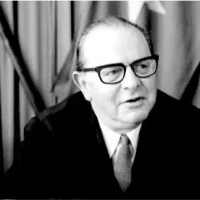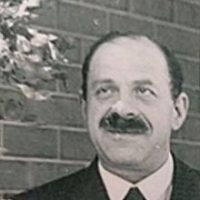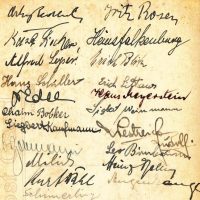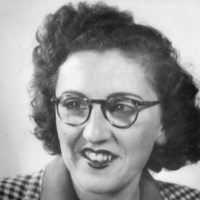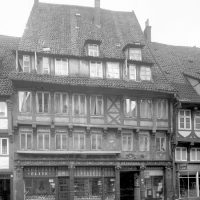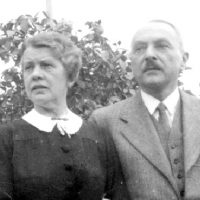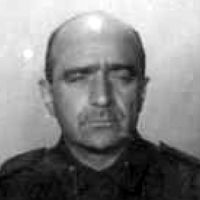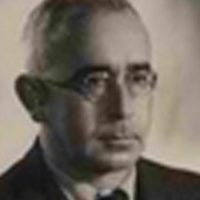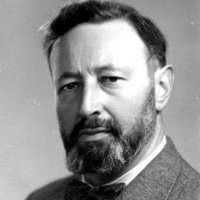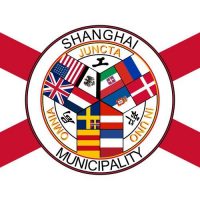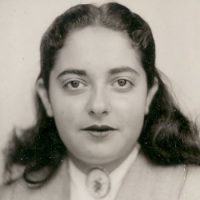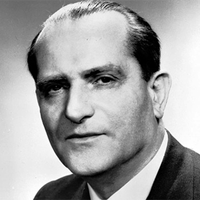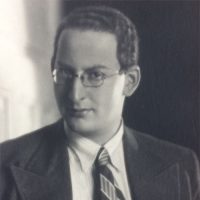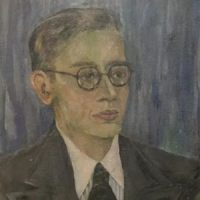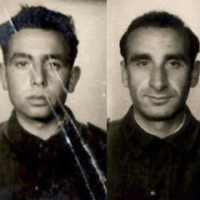How hard is it to give up one’s family? Thousands of Jewish families were not just torn apart by “some adverse circumstances”. The state terror of the Nazis forced grave decisions between death and life. The older people were, the more aware they probably were of what lay ahead for those who could not or would not flee for a variety of reasons.
Peter Dehn January 2024.
My mother, Ida Dehn, née Flieder, was the only member of her family to escape the Nazis’ murderous terror. At the age of 16, she was given the opportunity to travel to Australia. The Nazis had already deported her father and a brother; in her hometown of Hanover, Ida had to leave her mother and a brother behind.
Ida Flieder[1] Hannover registry, entry no. 2053 from June 27, 1921. is born in Hanover on June 26, 1921. For her father Abraham (Adam) it is the second child of the second marriage with Ruchla (Rosa) Hoffer. They have two more sons: Simon (Chin; *1922) and Isaak (*1919) are born in Hanover. From Abraham’s first marriage comes the son Izrael, who lives with the family until 1926.
Polish Jews in Hanover
Ida’s parents come from Warsaw, are therefore Polish Jews and citizens of this country – as are their children. The parents came to Hanover during the First World War. It is not known whether they were already married at that time or whether they first got married in Hanover. Abraham always states his profession as brush maker. From Ida’s stories it can be inferred that he is in poor health and cannot work. Is this the result of an injury from World War 1, where he probably served in the Polish army? Ruchla is a housewife, as was the tradition at the time.
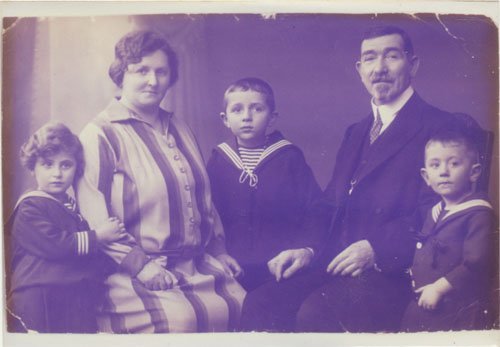
Ida’s parents come from Warsaw, are therefore Polish Jews and citizens of this country – as are their children. The parents came to Hanover during the First World War. It is not known whether they were already married at that time or whether they first got married in Hanover. Abraham always states his profession as brush maker. From Ida’s stories it can be inferred that he is in poor health and cannot work. Is this the result of an injury from World War 1, where he probably served in the Polish army? Ruchla is a housewife, as was the tradition at the time.
Ida attends the Jewish kindergarten at Ohestraße 9, as possibly does the neighbor’s boy Max Wildvogel[2] Max Wildvogel was born on May 5, 1922 in Hanover. He is one of the few in his family to escape the Nazis by fleeing to Palestine. There he joined the British army and was naturalized in 1944. He took the name Moshe Meron and died in Israel in 1990., called “Bubi”, who is one year younger. Perhaps later they also have the same way to school. Both families live in the center of Hanover at Marktstrasse 38, just a 15-minute walk from the main train station. The historic half-timbered house[3] Arnhold & Kotyrba “Cityscape in Transition.Hannover”, Wolfenbüttel 2012, page 35. ISBN 978-3-942712-24-8, accessed on July 20, 2023. with the unusually high gable roof is dated to the 2nd half of the 16th century. Like almost the entire historic center of Hannover, it was razed to the ground during the Allied air raids on September 27/28, 1943. The rebuilding was done in tasteless architecture. The ugliness Marktstraße 40 is no longer in the middle of a long street, but at the corner of the new small road Senior-Blumenberg-Gang[4] Wilhelm Blumenberg, pastor of the Aegidienkirche, senior of the spiritual ministry of city and father of a resistance fighter was not worth the city fathers naming a “street” or “alley” after him. “Gang” (“aisle”) is not a common termin for a street in Germany. Cf. „Hannover entdecken“, retrieved July 10, 2023.. The house number 38 stood to the right of it on today’s playground next to the admonishing ruin of the Aegidienkirche.

The house in Marktstraße
The Flieders rented an apartment on the 3rd floor, the Wildvogels lived on the 2nd floor until 1936. The children, who are about the same age, and perhaps also the coincidence that both sets of parents are named Abraham and Rosa, may have brought the neighbors and their children closer together, as did the fact that both families are Polish Jews from Warsaw.
Also on the 3rd floor of Marktstraße 38[5] Address book of the city of Hanover 1935, pages 120, 190, 474, 534. Digital collections of the Lower Saxony State Library, accessed on July 5, 2023. live the projectionist August Zoch, the worker Fritz Zimmermann and the painter Joseph Krause. Other neighbors are three workers, four widows and a musician. The house owner August Hesemann advertises his oven factory in the backyard with a lettering above the front door. To the left of the front door the “business owner” Elisabeth Thiemann runs the “Elite” shoe shop. On the right is the small shop of the engraver Paul Wolf.
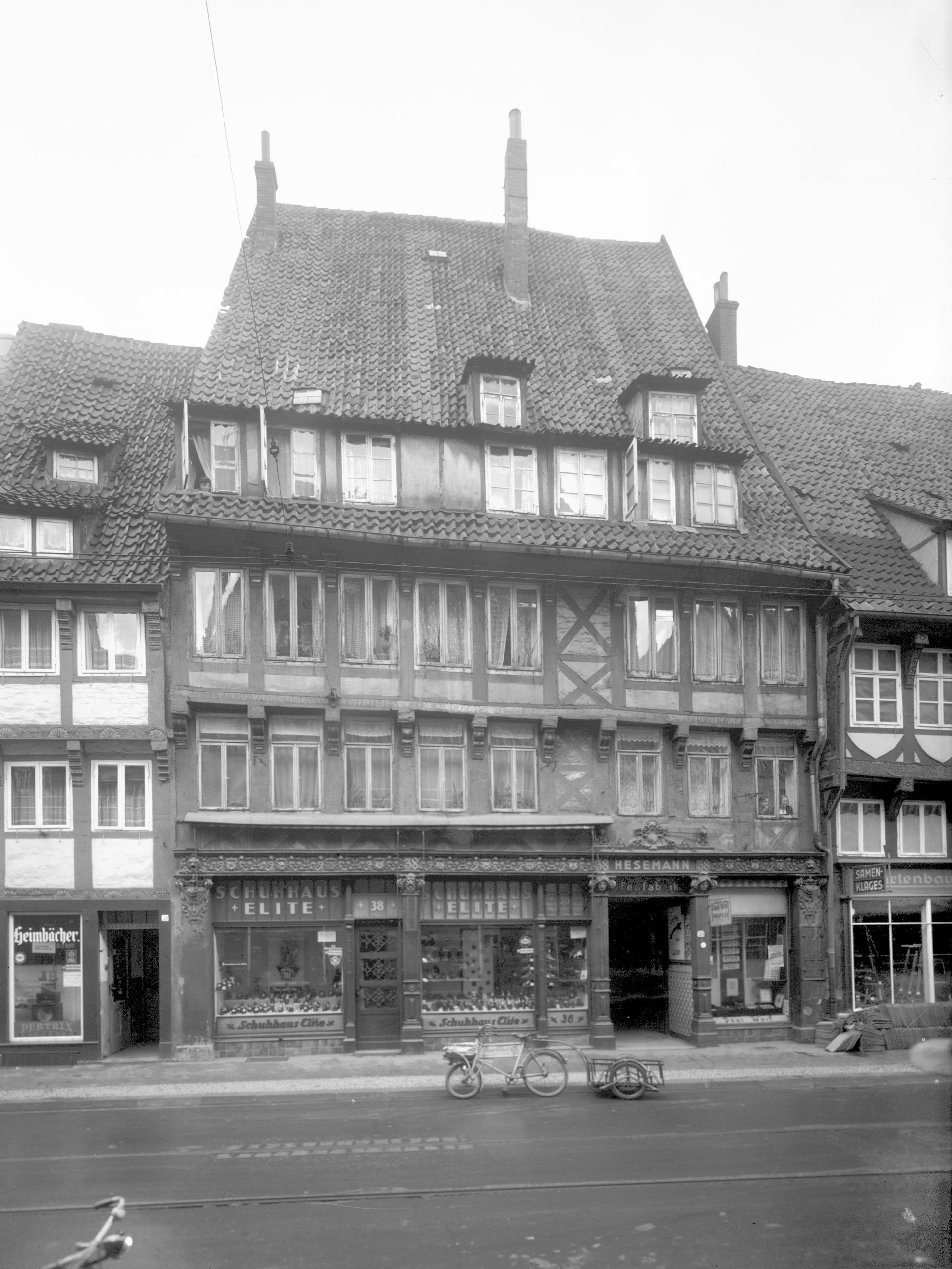
National Socialist persecution of the Jews
1936 Ida finishes school. Abraham has no possibility to finance a longer schooling or vocational training. In any case, the Nazis intervene deeply and restrictively in the everyday life of the Jewish population. They almost completely prevent the vocational training of Jewish youths. Ida must therefore earn her own living. But only Jews are allowed to employ Jews. So Abraham places her with his friend Leo Nussbaum as a domestic helper. Ida lives with her employer at Nordmannstraße 15[6] The entire old town of Hanover was destroyed in the World War. Nordmannstrasse was not included in the new building planning., a popular shopping street in the center. Leo and Mally Nussbaum have two daughters: Jutta was born in 1930. Marga was born in 1921, like Ida, but two months older. Perhaps they already know each other from kindergarten and school? From Leo’s kosher butcher shop or apartment, Ida walks to her family in about 12 minutes when she gets time off.
In 1938, Poland threatened its citizens living abroad with the withdrawal of their citizenship if they did not report to a Polish consulate by a certain day. This clearly targets around 70,000 Jews who live in Germany. However, the even more anti-Semitic Nazis did not want to keep the “Eastern Jews” who were despised by Poland in the country and start a dispute with the government of the neighboring country: on October 28, 1938, they take thousands of Polish Jews from their homes and ship them east by train and deport them to Poland. This also happened to Ida’s brother Isaak and her father Abraham, who died in the Bentschen camp (Zbaszyn, Greater Poland Voivodeship) in January 1939.
From Zbaszyn, one of the women living in the camp asks her brother in Paris for help. The young man, Herschel Grynszpan, angrily shoots a less important employee of the German embassy. The Nazis made this the starting point for a new anti-Semitic smear campaign, culminating in the pogrom night from November 8th to 9th, 1938. In Hanover 94 shops and 27 apartments were devasted by the Nazi mob.
Nazi bureaucracy and Australian bailout
Leo Nussbaum suspects the worst for his family. The destruction of his business on 8/9 November 1938 at the latest shows that Jews are no longer safe in Germany. Like thousands of Jews, Leo Nussbaum was immediately deported to a concentration camp. Like many other Jewish men, he bought his release from Buchenwald concentration camp on 14 November 1938 by promising to leave Germany with his family more or less immediately.
Leo’s Melbourne professional colleague Norman Smorgon[7] Cf. National Archives of Australia (NAA), NAA_ItemNumber8209899. had already applied for a guarantee for the four Nussbaums at Leo’s request[8] Mark Rubinstein to Peter Dehn, Email from Sep 29, 2023. in July 1938. Leo will take Ida with him on a journey halfway around the world. First, however, Ida and her employers have to deal with the bureaucracy of anti-Semitism. Ida has to make a declaration about her (non-existent) assets. She was only allowed to take the listed items of clothing and everyday items with her after the tax office[9] Lower Saxony Main Archive, ha_nds._hann._210_acc._2004_025_nr._3606. approved her list on November 28, 1938. “The purchases for the purpose of emigration remain within reasonable limits. There are no objections to taking the items”, the customs investigation office generously confirmed on December 1st; Received by the Chief Financial Officer of Hanover the next day. Most generously, if sarcasm is permitted, Ida is exempt from the “Dego[10] Tax that had to be paid by emigrants to the “Deutsche Golddiskontbank”. In addition, Jews willing to emigrate had to pay a “Reich escape tax”too, and, after the November pogroms in 1938, a “Jewish property tax”. In order to pay these, many Jews were forced to monetize their assets. See Wikipedia about DeGo-Abgabe, retrieved June 30, 2023.” levy, one of the taxes the Nazi state used to appropriate Jewish property to finance its planned war.
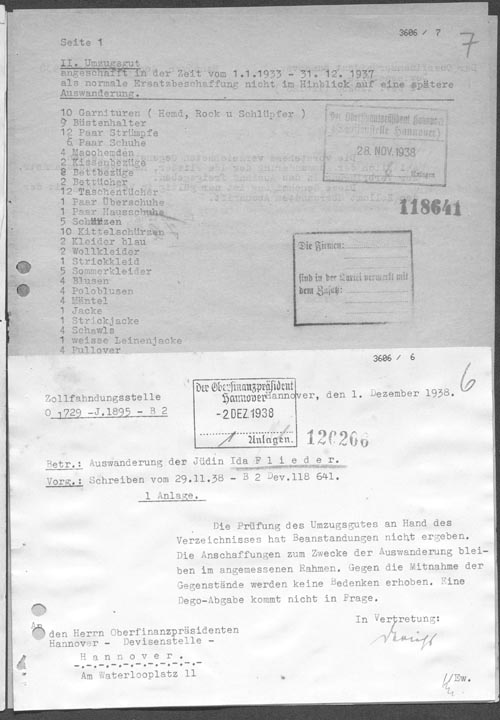
From Hanover to Melbourne
Before Christmas 1938, Ida said goodbye to her mother and her brother Simon in Hanover. She will never see her family members again.
The Nussbaums and Ida first take the train to Hamburg, where the Australian Consulate General issues their visas on December 19th. From there they take the ship to the British port of Grimsby at the mouth of the Hull. They cross England by train. The Duchess of Atholl left Liverpool for Canada on New Year’s Eve 1938. The five refugees travel first class because there are no other tickets available at such short notice[11] This will be Leo Nussbaum’s downfall when applying for reparations in Germany after the war.. Now Canada is crossed by train. The liner MS Aorangi leaves Vancouver for Australia on January 19, 1939. The largest and fastest motor ship in the world when it was commissioned in 1925 makes stops at Honolulu, Suva and Auckland. On the two long legs of the sea voyage, the Nussbaums and Ida have shared cabins. Ida’s occupation is given in the passenger lists[12] Passenger list of the Duchess of Atholl and entry documents for Canada via ancestry.de. as “domestic”.
18 years in Australia
On February 10, 1939, the tour company left the Aorangi in Sydney and, after two months, reached the destination Melbourne by train on February 12, 1939. Their first shared address is house number 1 on Waterloo Street[13] Australia Jewish Welfare and Relief Society Nussbaum and Flieder index cards; US Holocaust Memorial Museum database, retrieved March 5, 2021. (now Waterloo Crescent) in the St. Kilda district favored by Jews, east of the center of the metropolis. Ida and the Nussbaums report to the aid organization Australia Jewish Welfare and Relief Society. The index card names Mrs. Atkinson[14] Australia Jewish Welfare and Relief Society Nussbaum and Flieder index cards; US Holocaust Memorial Museum database, retrieved March 5, 2021. in the Carlton district as Ida’s first employer. As a domestic helper[15] Index card Ida Flieder, collection USHMM, retrieved June 20, 2023., she earns 15 Australian pounds a month. The travel group soon parted ways. For the next few years, Ida worked, among other things, as a packer in a biscuit factory, later in a shoe factory as a folder and then as a quilter for a leather goods manufacturer.
When, how and through which mutual friends she met Heinz Dehn remains a mystery. The British deported Heinz to Australia in September 1940 on the internee ship Dunera. He was imprisoned there until the end of November 1942. Only after that – he served in a unit of the Australian army until March 1946 – was contact possible at all. By 1948 at the latest, Ida and Heinz moved in together. Her first apartment is at 109 Wellington St. in the Windsor district. The belt and button maker Hyman & Wieselmann, which Heinz has operated since July 1949, is located in Melbourne’s Chinatown. Ida worked in other companies until 1952 and only joined the family business[16] Letter from Australian tax consulters Potts to Heinz Dehn dated Feb 17, 1958. in 1953.
In 1951 they both moved to 47a Henry St., a few hundred meters from Wellington Street. They took over the bungalow from friends: Dave and Bernice Morris are expecting their second child and want to expand.
Ida and Heinz were married on March 12, 1951 in the Caulfield synagogue by Rabbi Isaac Amber Bernstein and had the marriage registered with the authorities. The witnesses are Walter Fürst, who comes from Vienna, and Eric Robert Towers (Erich Tichauer), who was born in Ratibor (today Racibórz, Silesian Voivodeship, Poland). Both are Dunera boys like Heinz. A honeymoon is out of the question. The company requires full attention and money is tight anyway. In May 1953 their son Peter was born in Melbourne.
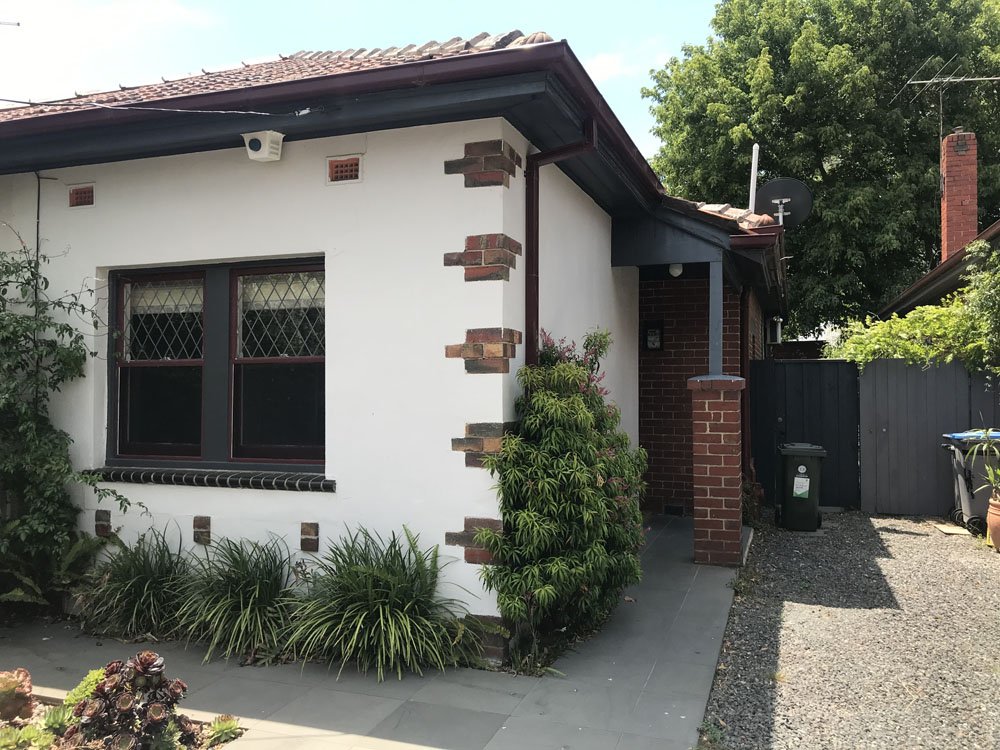
Back to Germany
In 1957, on the one hand, enough money was saved for the trip to Germany. On the other hand, after six years of disputes with the German authorities for reparation and compensation, Heinz can finally dispose of his parents’ aryanized rental house and a German bank account. This ensures the family’s livelihood in Germany. On May 10, 1957, the Dehns boarded the Fairsea bound for Southampton. After crossing the Channel from Harwich to Hoek van Holland[17] Cf. stamp on id card Ida Dehn. they arrive in Hanover. Ida is horrified because after the complete destruction she cannot find any familiar reference point in her hometown.
So the Dehns travel on to Berlin, Heinz’s birthplace. Their first accommodation is the Hotel “Zum Traber” in Charlottenburg at Stuttgarter Platz 9[18] Stuttgarter Platz 9 in Berlin Charlottenburg was Heinz‘ birthplace.. After a short time there and a few months of subletting, they received the “allocation through usage regulations” for an apartment[19] Berlin Steglitz district administration, „allocation through usage regulations“, dated Oct 18, 1957. in the West Berlin district of Steglitz, which they moved into in December 1957. Since then Ida has been a housewife. Heinz takes care of the family’s income.
When Ida is pregnant again, Heinz and Ida look for a larger apartment. A caller introduces himself as “Herr Niemand” (Mr. Nobody) and makes an offer. Heinz and Ida think it’s a joke. But no, he is not a fake caller. The tenant of an Aral gas station is looking for a new tenant for an apartment in his rental building on Wielandstrasse near Friedenau S-Bahn station. The apartment is nice, the rent is reasonable, the move is being carried out. Peter’s sister was born on October 26, 1963.

At the age of 21, Peter moves into his first apartment. The head of the family, Heinz, died on January 1, 1977. Ida soon moved into a smaller apartment, not far away on Hauptstrasse. In 2006 she had been living there alone for a long time; The 2½-room apartment is threatening to outgrow her. She rents an apartment in a residential complex. In 2009, when she was 88, Ida was in need of care and had to move to the facility’s nursing ward. Your health is rapidly deteriorating. Two operations for fractures of the femoral neck contribute to this. From around 2014, Alzheimer’s disease started to break through. Ida’s mental performance quickly declines and in 2016 she can neither recognize her son nor her grandson Paul.
Ida Dehn died on August 15, 2017 at the age of 96. She is survived by two children, three grandchildren and a great-grandson.
Please note: Unless otherwise stated, the documents mentioned come from the Dehn family archive. Further information is based on oral history by Ida and Peter Dehn.
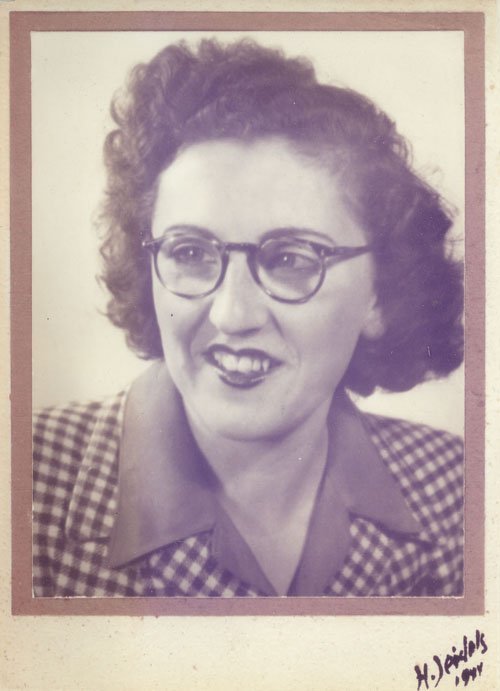
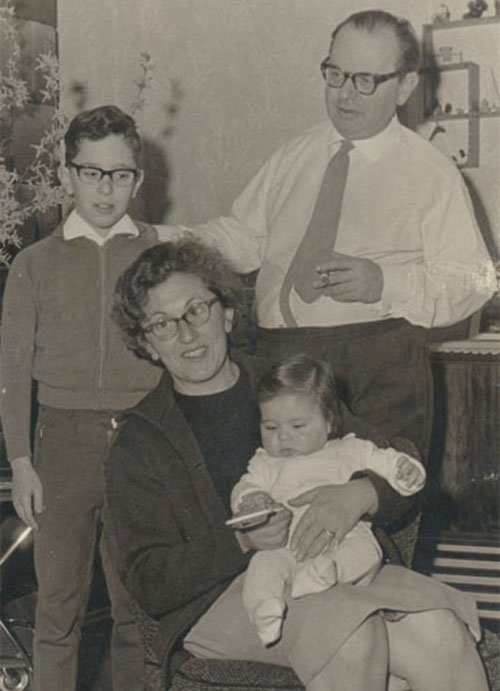
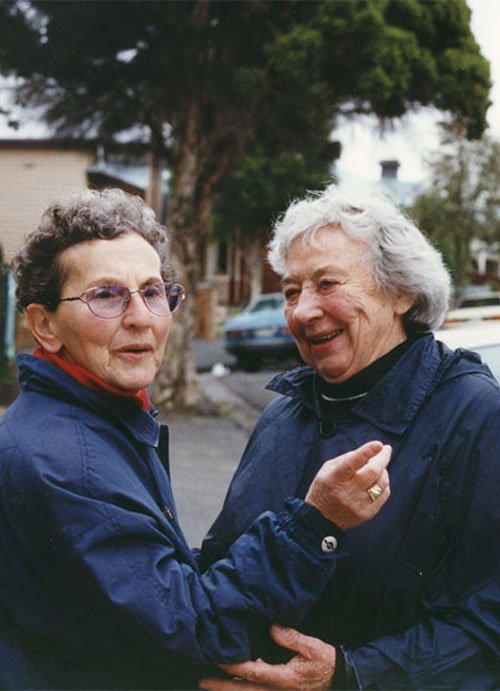
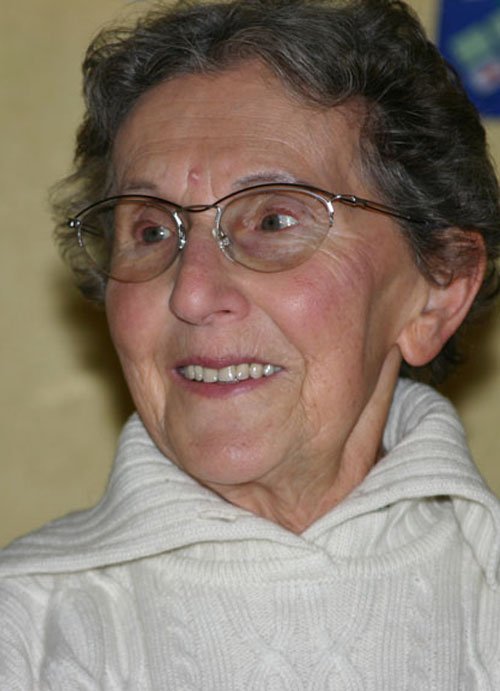
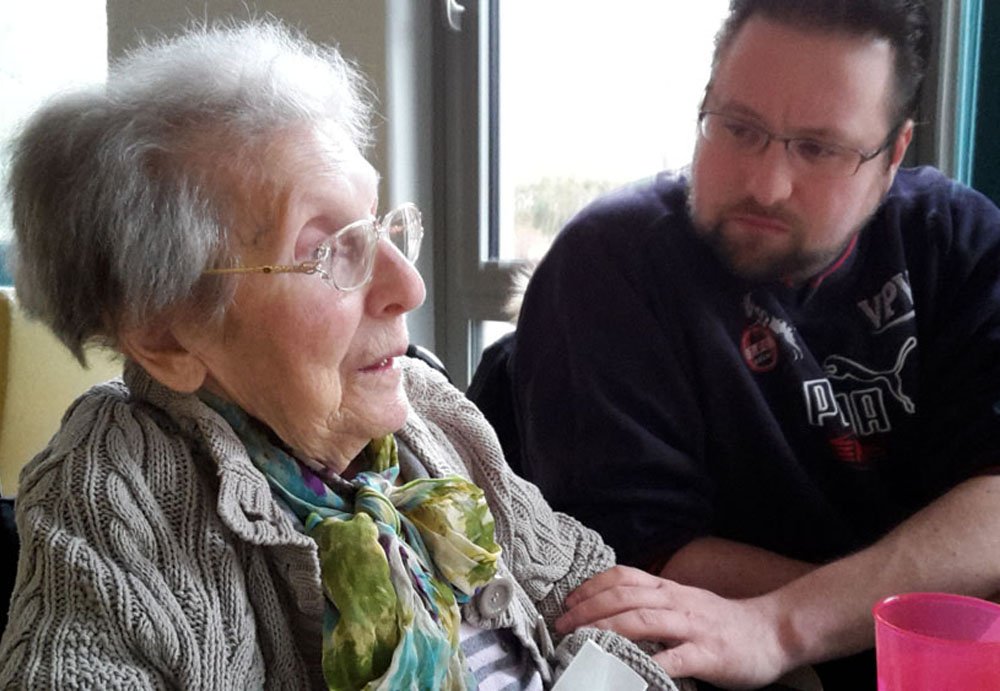
From left: Ida Dehn in 1944, photo: Dunera Boy Harry Jay. Ida and Heinz Dehn with their children, 1963, photo: Jürgen Henschel. Ida (left) and her friend Bernice in Melbourne in 1994. Center: Ida in 2003. Right: Ida and grand son Paul. Photos: Peter Dehn.
Footnotes
show
- [1]↑Hannover registry, entry no. 2053 from June 27, 1921.
- [2]↑Max Wildvogel was born on May 5, 1922 in Hanover. He is one of the few in his family to escape the Nazis by fleeing to Palestine. There he joined the British army and was naturalized in 1944. He took the name Moshe Meron and died in Israel in 1990.
- [3]↑Arnhold & Kotyrba “Cityscape in Transition.Hannover”, Wolfenbüttel 2012, page 35. ISBN 978-3-942712-24-8, accessed on July 20, 2023.
- [4]↑Wilhelm Blumenberg, pastor of the Aegidienkirche, senior of the spiritual ministry of city and father of a resistance fighter was not worth the city fathers naming a “street” or “alley” after him. “Gang” (“aisle”) is not a common termin for a street in Germany. Cf. „Hannover entdecken“, retrieved July 10, 2023.
- [5]↑Address book of the city of Hanover 1935, pages 120, 190, 474, 534. Digital collections of the Lower Saxony State Library, accessed on July 5, 2023.
- [6]↑The entire old town of Hanover was destroyed in the World War. Nordmannstrasse was not included in the new building planning.
- [7]↑Cf. National Archives of Australia (NAA), NAA_ItemNumber8209899.
- [8]↑Mark Rubinstein to Peter Dehn, Email from Sep 29, 2023.
- [9]↑Lower Saxony Main Archive, ha_nds._hann._210_acc._2004_025_nr._3606.
- [10]↑Tax that had to be paid by emigrants to the “Deutsche Golddiskontbank”. In addition, Jews willing to emigrate had to pay a “Reich escape tax”too, and, after the November pogroms in 1938, a “Jewish property tax”. In order to pay these, many Jews were forced to monetize their assets. See Wikipedia about DeGo-Abgabe, retrieved June 30, 2023.
- [11]↑This will be Leo Nussbaum’s downfall when applying for reparations in Germany after the war.
- [12]↑Passenger list of the Duchess of Atholl and entry documents for Canada via ancestry.de.
- [13]↑Australia Jewish Welfare and Relief Society Nussbaum and Flieder index cards; US Holocaust Memorial Museum database, retrieved March 5, 2021.
- [14]↑Australia Jewish Welfare and Relief Society Nussbaum and Flieder index cards; US Holocaust Memorial Museum database, retrieved March 5, 2021.
- [15]↑Index card Ida Flieder, collection USHMM, retrieved June 20, 2023.
- [16]↑Letter from Australian tax consulters Potts to Heinz Dehn dated Feb 17, 1958.
- [17]↑Cf. stamp on id card Ida Dehn.
- [18]↑Stuttgarter Platz 9 in Berlin Charlottenburg was Heinz‘ birthplace.
- [19]↑Berlin Steglitz district administration, „allocation through usage regulations“, dated Oct 18, 1957.
